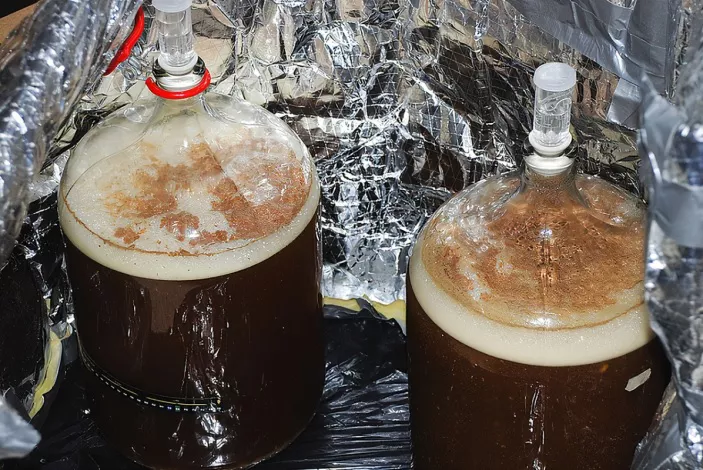Chardonnay, a beloved and versatile white wine, often sparks debate among oenophiles regarding its ideal serving temperature. The question “Should Chardonnay wine be chilled?” is one that frequently emerges, inviting discussion about the nuances of temperature and its impact on the flavor profile and overall experience of this popular varietal. Understanding the complex relationship between temperature and Chardonnay is crucial for wine enthusiasts and connoisseurs alike.
The Chardonnay Experience: Understanding its Characteristics
Chardonnay, known for its adaptability to various winemaking styles, presents a diverse range of flavors and aromas. These can include citrus, tropical fruits, apple, pear, and even notes of vanilla and butter. The grape’s susceptibility to oak aging further diversifies its taste profile, resulting in variations from crisp and unoaked to creamy and heavily oaked styles. Given this diversity, the ideal serving temperature for Chardonnay can vary significantly based on its style and personal preferences.
The Impact of Temperature on Chardonnay
Temperature plays a pivotal role in unlocking the true potential of Chardonnay. The perception of flavors and aromas in wine is highly sensitive to temperature variations. When served too cold, the wine’s complexities might be masked, muting its aromas and flavors. Conversely, when served too warm, the alcohol may become overly pronounced, and the acidity might seem subdued.
Chilling Chardonnay: Finding the Sweet Spot
Determining the optimal temperature for serving Chardonnay requires a delicate balance. As a general guideline, a lightly oaked or unoaked Chardonnay benefits from being served cooler, typically between 50 to 55 degrees Fahrenheit (10 to 13 degrees Celsius). This range preserves the wine’s vibrant fruit flavors and ensures the acidity remains lively without overwhelming the palate.
Exploring Varietal Styles: Unoaked vs. Oaked Chardonnay
Unoaked Chardonnay, known for its crispness and freshness, tends to shine when chilled slightly more than its oaked counterparts. The absence of oak influence allows the wine’s fruit-forward characteristics to take center stage. Serving it slightly cooler, around 50 degrees Fahrenheit, enhances its zesty acidity and highlights the citrus and mineral notes.
Conversely, oaked Chardonnay, characterized by its creamy texture and nuanced flavors imparted by oak aging, benefits from a slightly higher serving temperature. Allowing it to warm up a bit, around 55 degrees Fahrenheit, can bring out the wine’s complexity, revealing layers of vanilla, butter, and toasted oak while maintaining a balanced structure.
Room for Personal Preference: Tailoring Temperature to Taste
While guidelines provide a starting point, personal preference remains paramount when serving Chardonnay. Some individuals may prefer a crisper, cooler wine, while others might appreciate a slightly warmer, more aromatic experience. Experimenting with different temperatures allows wine enthusiasts to discover their preferred style and temperature range for Chardonnay.
The Role of Food Pairing: Temperature’s Influence on Pairings
Pairing Chardonnay with food adds another dimension to the temperature debate. The ideal serving temperature can vary based on the dish being enjoyed alongside the wine. Lighter, chilled preparations such as salads, seafood, and appetizers complement a cooler Chardonnay, enhancing its refreshing qualities. Conversely, richer, creamier dishes or those with heavier sauces may benefit from a slightly warmer Chardonnay, allowing the wine’s fuller body and nuanced flavors to complement the meal.
Adapting to Climate: Temperature Considerations in Different Environments
Environmental factors also play a crucial role in determining the appropriate serving temperature for Chardonnay. In warmer climates, where ambient temperatures are higher, serving the wine slightly cooler can offset the external heat, ensuring the wine retains its refreshing qualities. Conversely, in cooler climates, where temperatures may be lower, allowing the Chardonnay to warm up slightly can help unlock its aromas and flavors more effectively.
Best Practices for Serving Chardonnay
Achieving the ideal serving temperature for Chardonnay involves careful consideration and execution. Several best practices can ensure an optimal tasting experience:
Temperature Calibration: Use a wine thermometer to accurately gauge the wine’s temperature before serving. This ensures precision in reaching the desired temperature range.
Chilling Methods: Avoid rapid temperature changes by refraining from placing the wine bottle directly in the freezer. Instead, opt for gradual chilling in a refrigerator or an ice bucket filled with a mixture of ice and water.
Decanting and Aerating: For fuller-bodied or older Chardonnay, consider decanting the wine before serving. This process allows the wine to breathe and can help it reach its optimal temperature more efficiently.
Temperature Maintenance: To maintain the desired temperature throughout the drinking experience, consider using a wine cooler or bucket filled with ice to keep the bottle at a consistent temperature.
Conclusion: Finding the Right Chill for Chardonnay
In the grand debate surrounding whether Chardonnay should be chilled, the answer lies in the nuanced interplay between personal preference, varietal style, food pairings, and environmental factors. While a general temperature range serves as a useful guideline, allowing flexibility based on individual taste and context is key to unlocking the full potential of this versatile varietal.
Ultimately, the journey of exploring Chardonnay’s ideal serving temperature is an exciting and subjective adventure. Embracing experimentation and considering the diverse factors that influence temperature empowers wine enthusiasts to curate a Chardonnay experience that resonates uniquely with their palates and preferences. Cheers to discovering the perfect chill for your glass of Chardonnay!


